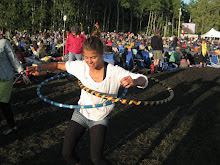



Motorcycle diaries in Mozambique. A 12 L gas container on the tail, a tent, matt, sleeping-bag, 2 peoples belongings and food for 3 days in a trekking pack on my back, a 6 5’’ Jon in front with another knapsack of goodies strapped-on affront. Our silhouette could easily be mistaken for an humpback and a pregnant woman on wheels.
After a scrumptious breakfast of cornmeal with sugar and peanut-butter (prepared by Jon’s housemate, Chengeti from Zimbabwe), Jon (an MCC engineer in Tete province from Oregon), and I headed out into the crisp morning air. It didn't take too long until sweaters were removed, for Tete, being the hottest of all provinces in Mozambique, warmed up as the sun peaked over mountain tops.
Off the pavement and into the bush we went. Aside the large aisles of thorn trees, prickle-bushes, burrs and other random spiky growths, the trails would be absolutely spectacular for hard-core mountain bikers; Rocks, roots and all. As it were, we traveled on Jons’ Honda XL 125S through the trails - cargo and all – through these gallows of barbed things tearing at our limbs, and sand patches liberating us to power-slide (if we chose to or not). In our dustcover state we passed through random hut-villages waving at the dozens of children sprinting after us screaming ‘TA-TA” or “MAZUNGU!” Leaving them in our dusty trail we pushed through sand to arrive at the Luenha river (Loo-way-nee-a). The little, orange bike was lifted into a dug-out canoe. In the waist deep waters, 2 local Mozambicans in their tighty-whiteys guided the two MUZUNGUS and their treasures to the other side - Mandie. With an I-pod in one pocket, a phone in the other, camera in hand and a motorcycle in front, my heart had ‘butterfly’ moments as the occasional off-sided-tipping occurred and over-re-correction of the tipping could have had fatal consequences.
The journey over our 3 day stay in Mandie led us to communities with ‘sand dams’ which are man made barriers built across seasonal rivers (when its rainy season, water flows past that area). The way a sand dam works> with the dam wall in place, the rainwater collects as well as the sand that the waters bring with it. The sand piles up to the height of the dam wall and water stays preserved underneath, thus making an under-the-sand aquifer. It was interesting to see these dams and not see any water like one may expect, but instead sand all the way up to the dam wall. Once the rains have properly prepared this aquifer, upstream shallow wholes are dug out and water is present directly underneath the sand! This is so useful for this dry, arid, dessert like communities, for they are starting up gardens and small vegetable crops and even fruit-trees, which are new concepts to many in that area! As well, cattle and other animals are able to drink (where as before they would walk the whole day to the river to drink, sometimes only twice a week because it is so far!). People are able to easily access this water to drink, cook, bath and live! It was another National Geographic experience. At one of the dams, we came across a deep whole upstream where woman, young and old, sat at the base of the whole with their buckets, jugs and jars waiting. They conversed slowly and almost lethargically. I felt dehydrated looking at them but restrained from pulling out my Nalgiene and taking a swig of water. There was one woman inside that whole who was sifting the sand from the water with a cup. One scoop, wait for the sand to settle to the bottom of the cup, slowly pour into a container, carful not to disturb the sand particles in the process. The amount of water was so little and she continually had to dig a little deeper and wait for the water to sift through the sand granules filling the bottom of the whole little by little. This is quiet a process and can easily take up or over an hour to fill up a bucket of water. BUT > this is an improvement from years past!!! Right now, without rain, the water is sparse, but without this dam this community was suffering more so walking to the river miles and miles. Talking with a local man he told me that by the time they got back from the river, people and animals were already thirsty again from the heat and the water amount brought was barley sufficient. I could not imagine a life where each day water is so precious one could trade it for gold. Here, taking a bath is a luxury! Perhaps even gluttonous.
As you may have noticed, everything seems very DRY in this area. Even the fruit is dry! MALAMBE> The Baobab-tree fruit. A wood-like-material-green-velvet-covered shell, that can grow bigger them the size of a football or small as an egg. A red-painted interior contains segments of white-chalky fruit. You pop these pieces of chalk in your mouth and you saliva makes the fruity flavor of malambe come out and dissolve the white, leaving a dark red seed to dispose. It is THE strangest fruit I have ever eaten but very tasty, high in calcium and vitamin C. ☺
We made the journey back over the river with the bike and after getting lost in random bush-trails made it onto smooth road-again. I have never felt so thankful to take a shower before.



No comments:
Post a Comment